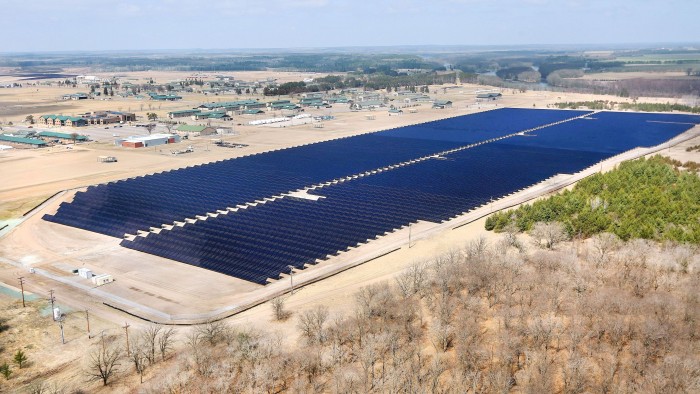Grid Batteries Are Poised to Become Cheaper Than Natural-Gas Plants in Minnesota

When it comes to renewable energy, Minnesota isn’t typically a headline-grabber: in 2016 it got about 18 percent of its energy from wind, good enough to rank in the top 10 states. But it’s just 28th in terms of installed solar capacity, and its relatively small size means projects within its borders rarely garner the attention that giants like California and Texas routinely get.
A new report on the future of energy in the state should turn some heads (PDF). According to the University of Minnesota’s Energy Transition Lab, starting in 2019 and for the foreseeable future, the overall cost of building grid-scale storage there will be less than that of building natural-gas plants to meet future energy demand.
Minnesota currently gets about 21 percent of its energy from renewables. That’s not bad, but current plans also call for bringing an additional 1,800 megawatts of gas-fired “peaker” plants online by 2028 to meet growing demand. As the moniker suggests, these plants are meant to spin up quickly to meet daily peaks in energy demand—something renewables tend to be bad at because the wind doesn’t always blow and the sun doesn’t always shine.
Storing energy from renewables could solve that problem, but it’s traditionally been thought of as too expensive compared with other forms of energy.
The new report suggests otherwise. According to the analysis, bringing lithium-ion batteries online for grid storage would be a good way to stockpile energy for when it’s needed, and it would prove less costly than building and operating new natural-gas plants.
The finding comes at an interesting time. For one thing, the price of lithium-ion batteries continues to plummet, something that certainly has the auto industry’s attention. And grid-scale batteries, while still relatively rare, are popping up more and more these days. The Minnesota report, then, suggests that such projects may become increasingly common—and could be a powerful way to lower emissions without sending our power bills skyrocketing in the process.
(Read more: Minnesota Public Radio, “Texas and California Have Too Much Renewable Energy,” “The One and Only Texas Wind Boom,” “By 2040, More Than Half of All New Cars Could Be Electric”)
Deep Dive
Climate change and energy
The problem with plug-in hybrids? Their drivers.
Plug-in hybrids are often sold as a transition to EVs, but new data from Europe shows we’re still underestimating the emissions they produce.
Harvard has halted its long-planned atmospheric geoengineering experiment
The decision follows years of controversy and the departure of one of the program’s key researchers.
Why hydrogen is losing the race to power cleaner cars
Batteries are dominating zero-emissions vehicles, and the fuel has better uses elsewhere.
Decarbonizing production of energy is a quick win
Clean technologies, including carbon management platforms, enable the global energy industry to play a crucial role in the transition to net zero.
Stay connected
Get the latest updates from
MIT Technology Review
Discover special offers, top stories, upcoming events, and more.